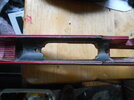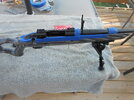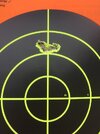kmw1954
Member
I have done four different Savage stocks. One was a Richards Micro-fit and the 3 others were all Boyd's. I have generally use Marine-Tex epoxy but I believe the Devcon produces better results. It is not quite as thick and flows better. Just make certain you apply the release agent everywhere it will clean up easily when finished. Much easier than epoxy stuck to the receiver. Wear latex cloves as this stuff gets everywhere, tape up the stock to protect it from oozing epoxy. The first job I did after it was finished I stripped it all out and started over because I didn't like the finished results. So don't be afraid to keep tat option in mind also.






